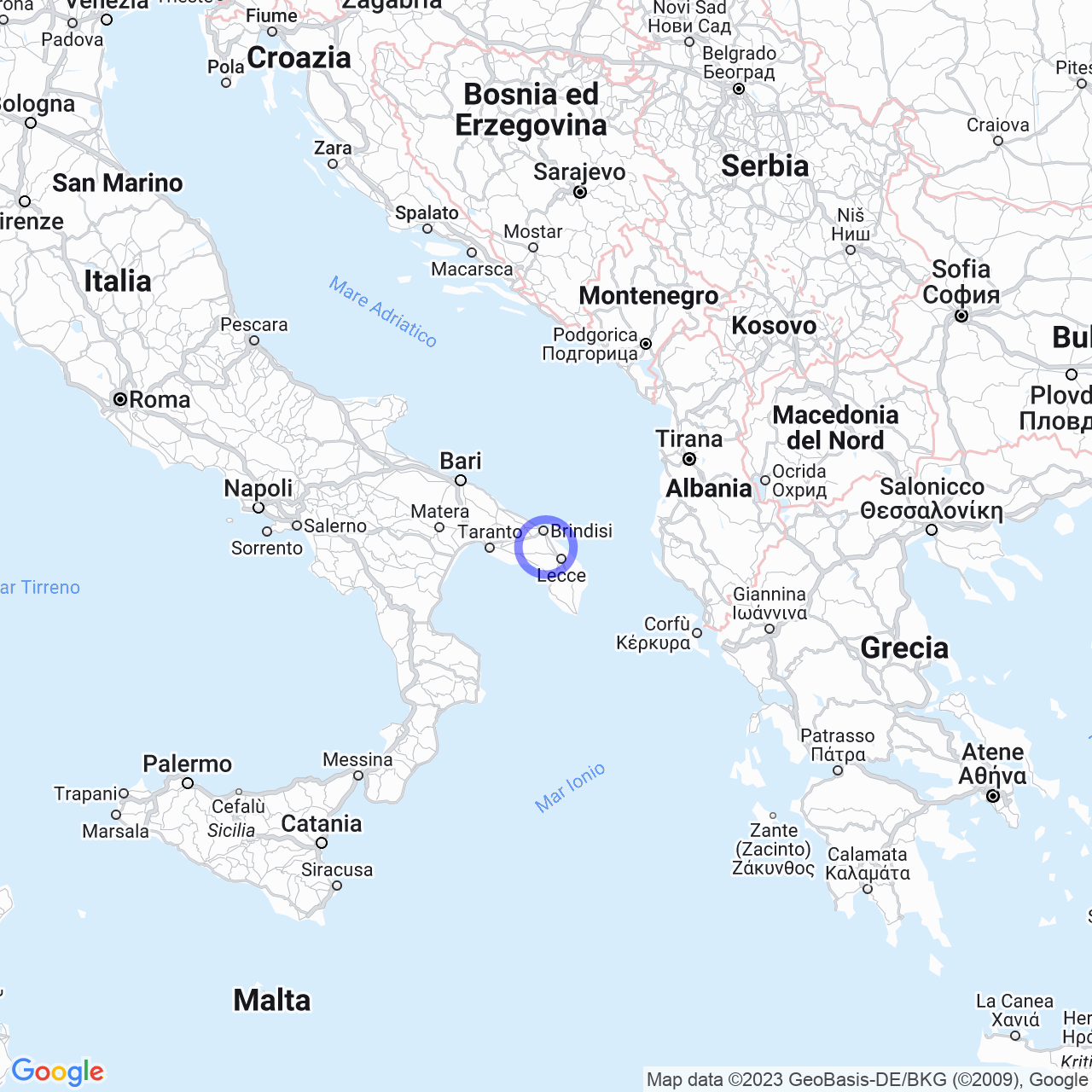Cellino San Marco
Cellino San Marco: Diving into the History of Puglia
Welcome to Cellino San Marco, a town of 6,055 inhabitants located in the province of Brindisi, in Puglia. In this article, we will take you on a journey to discover the history and places of interest in this charming town.
History
Let's start with the most important archaeological finding in the town's territory, namely the eneolithic "oven" tomb found inside the Li Veli forest. Although no longer locatable and completely abandoned, it is considered an invaluable historical testimony.
The main farm in the Middle Ages was "La Mea", where today you can admire a rural chapel dating back to the 15th century. The church of San Marco, on the other hand, was built between the 17th and 18th centuries on the remains of a chapel from the 9th century. Inside the church, you will find a beautiful Baroque altar and a silver statue of San Marco dating back to 1819.
Also famous is the castle of the nobles Albrizzi and Chyurlia, built around the 16th century and expanded in the 17th century. Cellino was ruled by many noble families including De Fallosa, de Noha, Albrizzi, Chyurlia, Ranocchi, and others, until 1806, when feudalism was abolished by Gioacchino Murat.
During the Risorgimento era, a "Carbonari Sale" and a section of Giovine Italia were also established. In 1927, the municipality, already belonging to the province of Lecce, was assigned to the province of Brindisi.

Monuments and Places of Interest
The Baronial Palace is certainly one of the most interesting places in Cellino San Marco. Located in Largo Castello, in the main square of the town, it was the medieval castle of Cellino and was used as a noble residence in 1578. It was expanded by Count Giovanni Antonio Albrizzi I, who purchased the fiefdom from the royal court, governing until 1615, and later expanded by Giovanni Antonio II, in the square tower part of the castle. Count Nicola Pasquale Chyurlia worked to transform the structure into the current one, starting the works in 1742 and adding the left wing. The entrance with the coat of arms carved on the stone was then built, in which the Rampant Lion stands out. In 1750 the palace was stormed by the population exhausted by famine and taxation. In the onciary cadastral map of 1756, the palace was still under the government of Count Chyurlia, later it was sold and passed through the hands of various lords, until it fell into disuse and was recovered for the establishment of a civic museum.
The parish church of San Marco (Evangelist) was located in the peripheral area of the castle and was founded in the 11th century as a chapel for the Basilian monks, dependent on the abbey of Sant'Andrea, near Brindisi.
Conclusion
In conclusion, Cellino San Marco is a small pearl of Salento, which still preserves the memory of its ancient history. We warmly invite you to visit it, to discover its hidden treasures and appreciate the beauty of our country.
